5 conclusions from the Women’s Tour 2022
The meaning of a ‘hard’ stage, a game of seconds, Wiebes versatility, Longo Borghini can do it all, Giro and Tour up next
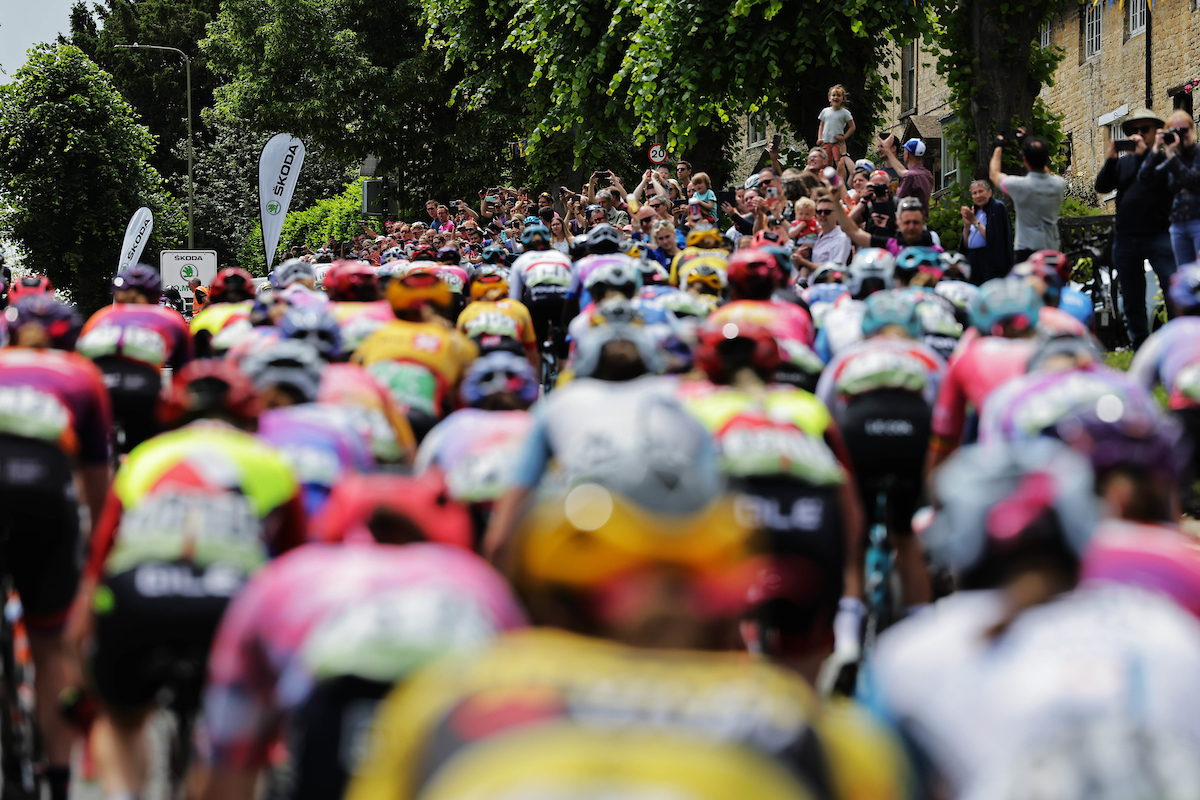
After six days of tough, closely-fought racing, the 2022 Women’s Tour came down to a dramatic finale on Saturday, decided by the very last sprint of the race.
At the start of the final stage in Oxford, day 5 winner Elisa Longo Borghini (Trek-Segafredo) and Grace Brown (FDJ-Nouvelle Aquitaine-Futuroscope) were on exactly the same time.
The Australian looked to have the upper hand after taking three bonus seconds in the first intermediate sprint but then Longo Borghini sprinted to an impressive third place to win the overall by just one bonus second.
With two back-to-back climbing days in Wales on Thursday and Friday, plus three fast and aggressive opening stages made harder by inclement weather, it was a hard edition of one of the calendar’s longest races.
Bar a time trial, which has only previously featured once, this year the Women's Tour threw every type of challenge at the peloton, and delivered interesting storylines from the general classification to the sprinters to the races within the race.
So what can we learn from the first week-long WorldTour stage race of the season? Here are Cyclingnews’ five conclusions from the Women’s Tour.
The meaning of a ‘hard’ stage is changing
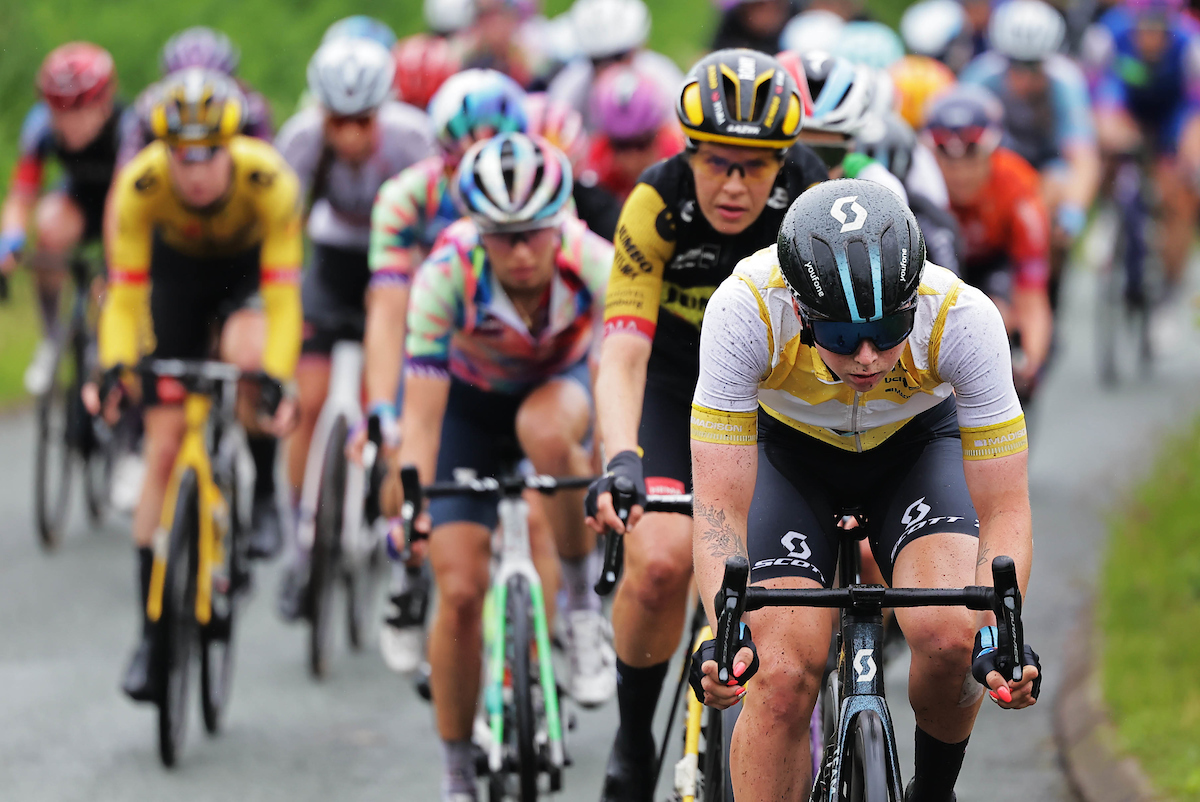
With the level of the women’s peloton rising every year, the level of difficulty a stage needs to make the race selective is also increasing. At the Women’s Tour, the way the two toughest stages were raced demonstrated this. Stage 5, billed as the Queen stage, panned out to be somewhat less decisive than hoped. The headwind on the final climb to Black Mountain played some part in this, but perhaps there was also a mismatch between the difficulty of the climb and the level of the peloton. In 2022, a long but relatively steady climb like Black Mountain won’t be the most selective of ascents, with many riders - not just the best climbers - able to handle it successfully.
The latest race content, interviews, features, reviews and expert buying guides, direct to your inbox!
Equally on stage 4, the quick succession of climbs may have looked tough on paper. But in reality the splits came from aggression at the front, rather than any key riders not being able to hold on. The sprinters may not have been able to follow the big move that went on the climb, but the vast majority had little difficulty handling the climbing while remaining in the peloton. In a race like the Women’s Tour, it may be hard to make the stages really challenging - mountain passes are not in abundance in the UK. But in future editions the race organisers may look for other ways to make the stages tougher for an increasingly strong peloton.
Bonus seconds can make or break a race
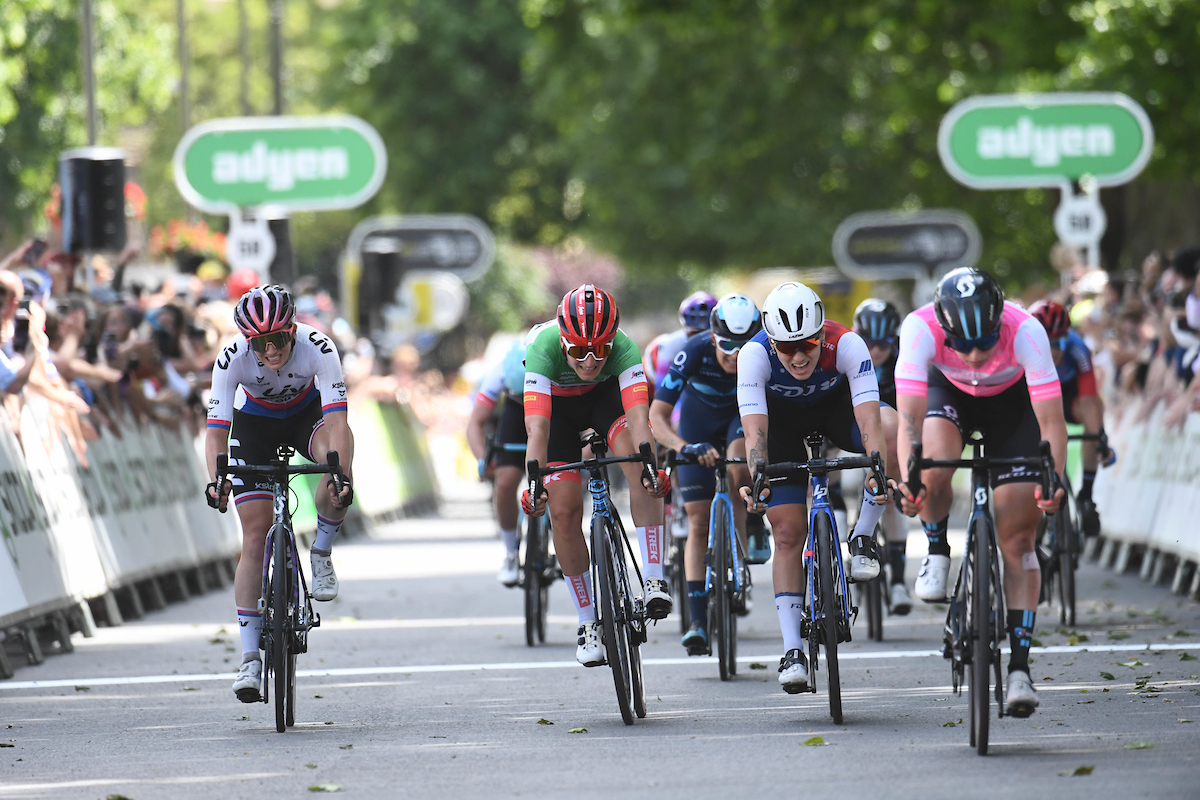
Whether at the finish or at intermediate sprints, bonus seconds are not a feature in every race, but the Women’s Tour showed what a level of excitement, jeopardy and tactical challenges their inclusion can add. The climbing on stages 4 and 5 may have carved out the general classification contenders, but the victory and the order of the top three came entirely down to bonus seconds. Rather than Brown and Longo Borghini being separated just on countback, the bonus seconds meant the pair could really be aggressive for the win, making every placing count on every stage. In a week-long stage race with no time trial or big mountains, bonus seconds can add a much-needed extra ingredient and the Women’s Tour proved the merit of that.
The bonus seconds also showed just how beneficial being an all-rounder is in stage races. The climbing should have been what sealed overall victory at the Women’s Tour, but in fact it came down to sprint placings, with Longo Borghini putting in an incredible effort to finish third on Saturday’s mass dash for the line. To win the overall, then, every part of your racing is important.
As well as their effect on GC, well-placed intermediate sprints and climbs can ignite races within the race, and we got to see two good battles for the sprints jersey and the climbers jersey, taken by Maike van der Duin (Le Col-Wahoo) and Elise Chabbey (Canyon-SRAM). The way the Women’s Tour organise these classifications incentivises breakaways, with points available during the stage rather than just being swept up by the day's winner. This also helps make the stages interesting from start to finish.
Wiebes’ power is more than just her speed
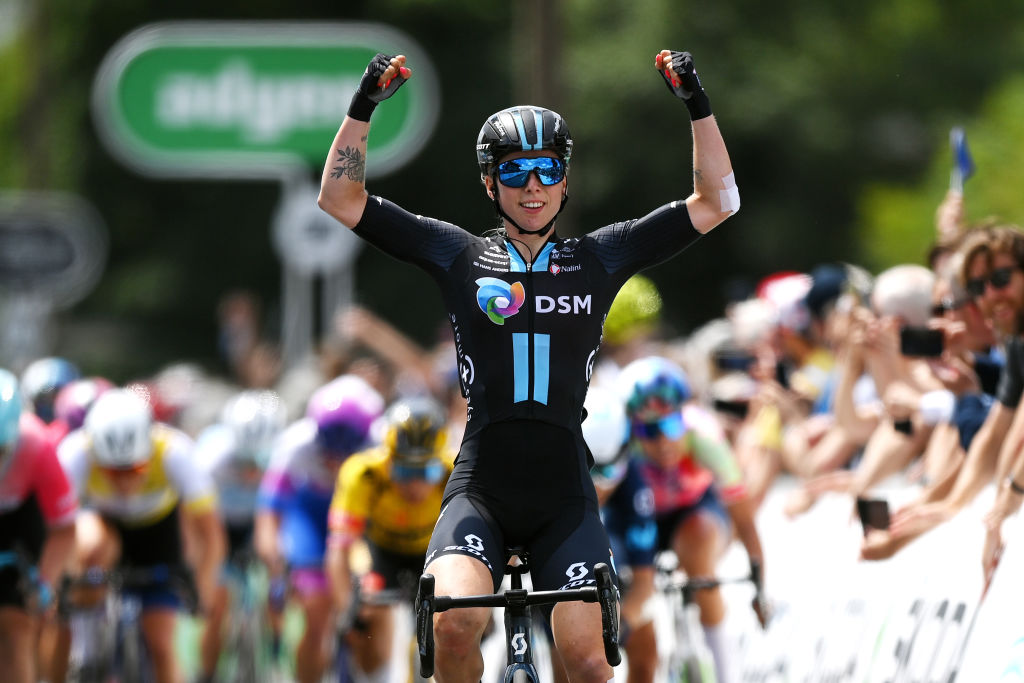
After her hat-trick at the RideLondon Classique last month, it would be easy to say that Lorena Wiebes’ success comes down to her unmatchable finishing speed and having one of the best lead-outs in the world, but her performance at the Women’s Tour proved it’s about much more than that. She is also a highly resilient rider, in that you can throw a lot of tough terrain at her and she will still be in contention. Even on stage 4, when the race split on the climbs, Wiebes was never far back and came within 15 seconds of catching the elite group of leaders and being able to go for the win.
We praise the likes of Pfeiffer Georgi and Charlotte Kool for their excellent lead-outs for Wiebes - the speed of which can ride even the best sprinters off their wheel - but DSM must also be praised for their strength in the chase. On that fourth stage, they were able to pull back a strong and motivated 10-rider lead group to within touching distance with little help from other teams, a testament to Georgi’s pulling power in particular. It’s not that Wiebes is just better in the final 500m, it’s that she and her team can get through challenging days and still deliver Wiebes to that final sprint. The only thing that stopped her from winning every sprint finale at the Women’s Tour was a crash that ended what looked to be a perfect set-up on Monday’s opening stage.
At her best, Longo Borghini can do it all
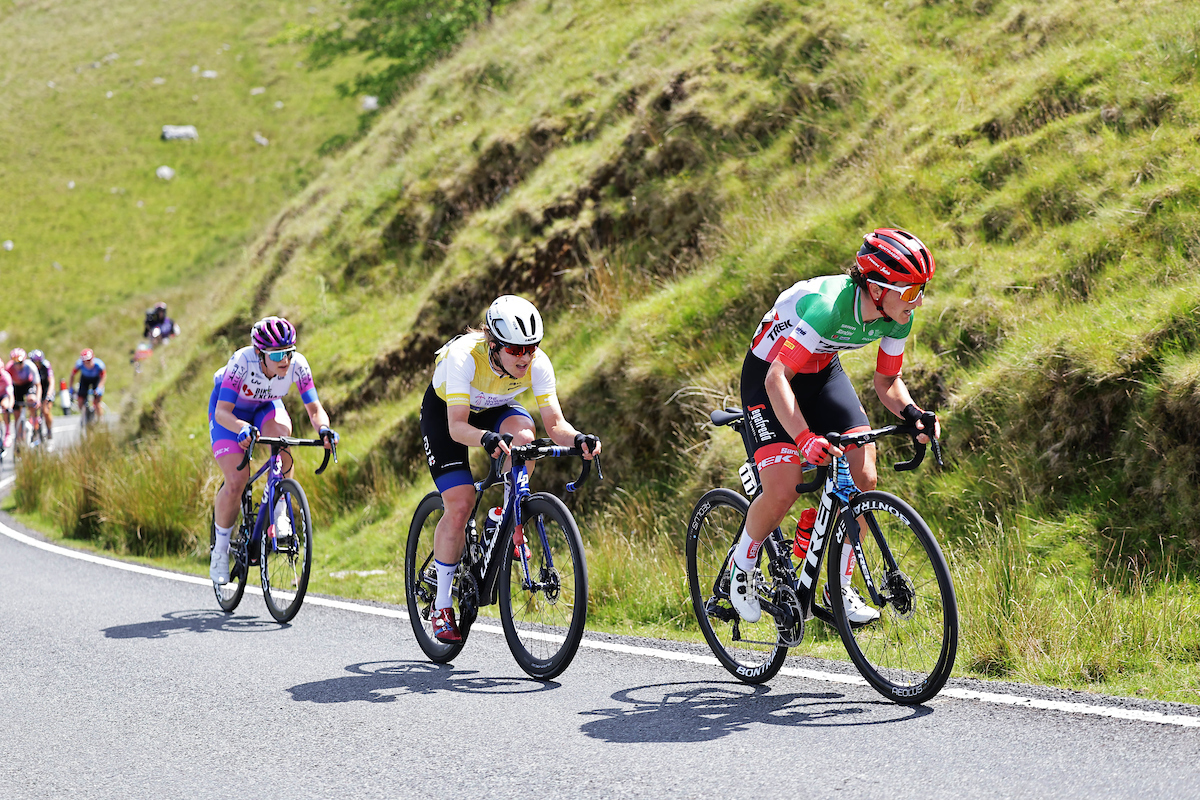
Despite winning Paris-Roubaix in April, Elisa Longo Borghini has had what she described on Saturday as “a strange spring”, held back by an extended period of sinusitis. When she took to the start of stage 1 on Monday, it was her first day of racing in almost a month and a half. But during the six days of the Women’s Tour, Longo Borghini seemed back at her very best. Winning on the race’s hardest climbs and contesting in the fastest sprints, the Italian proved she really can do it all. Longo Borghini may not be counted as the best climber or the best sprinter, but she certainly pulled off the impressive feat of being able to mix it with the best of both those riders this week in Britain.
Saturday marked the fifth time the 30-year-old had won the overall classification of a stage race, so whilst she’s perhaps not the typical climbing, time trialling GC rider, she is one of the very best all-rounders in the peloton and in less climbing-heavy stage races, that’s exactly what you need to win. Longo Borghini’s win also showed just how much a strong and committed team can do to buoy a rider’s performances, with the Italian regularly emphasising how much she wanted to repay her Trek-Segafredo teammates efforts, and how she went for the win because of they believed she could, perhaps more so than herself.
Still much to learn before the Giro Donne and Tour de France Femmes
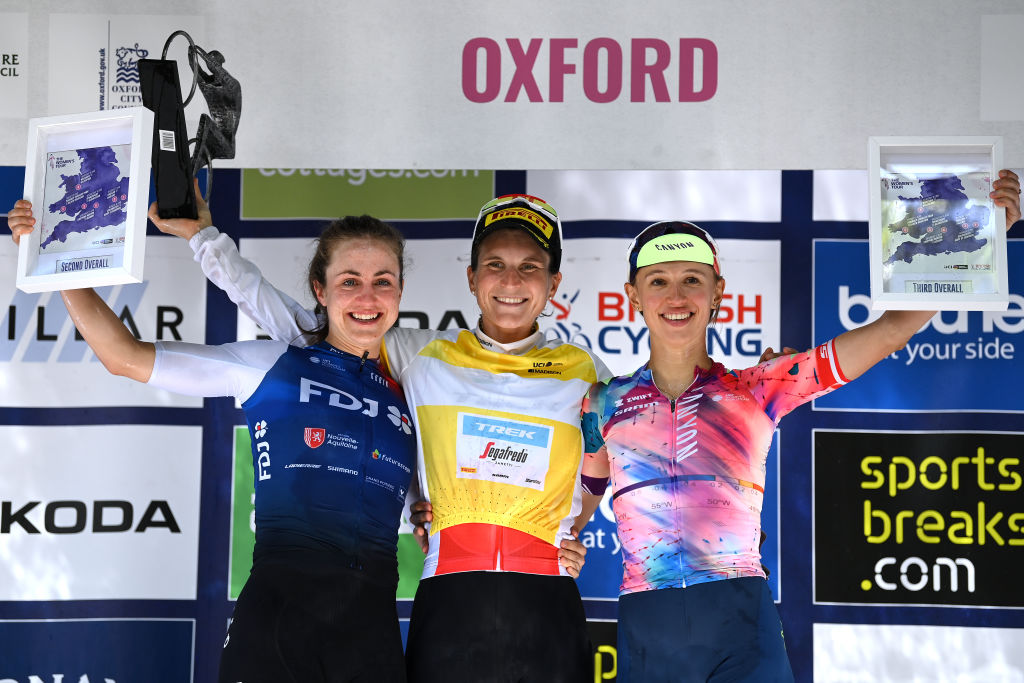
It was the last Women’s WorldTour stage race before the double-header of the Giro Donne and the Tour de France Femmes in July, but the Women’s Tour still leaves us with some questions ahead of the two big stage races. Whilst the men’s calendar is in full swing with pre-Tour preparation races, we are yet to see many of the main Tour de France Femmes contenders go head to head before the season’s main goals. The lack of significant climbing and the sizeable break before the Giro means the Women’s Tour is not an obvious preparation for July’s stage races, and many of the GC hopes for the Giro and the Tour are heading to altitude and training camps after the block of races in the UK.
Despite battling for the overall at the Women’s Tour, Grace Brown and Elisa Longo Borghini are unlikely to contend general classification at the Giro or the Tour. Brown will not ride the Giro, and confirmed on Saturday that she will be racing the Tour in support of teammate Cecilie Uttrup Ludwig’s overall ambitions. “I won’t be there for the GC but potentially there might be a stage for me earlier on in the race,” she said. “The GC is the priority.” Third-placed Kasia Niewiadoma will be aiming for the overall in France, but will now take a break from racing and focus on training.
So whilst there’s a lot we can conclude and learn from the six days of racing in Great Britain, there’s still a lot we don’t know before the Giro Donne and we’ll have to wait until the start line in Sardinia to see how the GC riders will fare in what is due to be a scintillating month of Grand Tour racing.
Matilda is an NCTJ-qualified journalist based in the UK who joined Cyclingnews in March 2025. Prior to that, she worked as the Racing News Editor at GCN, and extensively as a freelancer contributing to Cyclingnews, Cycling Weekly, Velo, Rouleur, Escape Collective, Red Bull and more. She has reported from many of the biggest events on the calendar, including the Giro d'Italia, Tour de France Femmes, Tour of Flanders and Paris-Roubaix. She has particular experience and expertise in women's cycling, and women's sport in general. She is a graduate of modern languages and sports journalism.